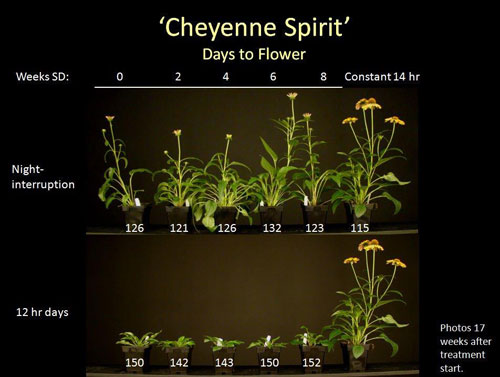Obtaining uniform flowering and branching on coneflower in the greenhouse
Coneflowers are an important herbaceous perennial crop for greenhouse growers. Reducing crop variability in flowering time and quality is addressed by recent Michigan State University research.
Echinacea spp. (coneflower) are an important herbaceous perennial plant for greenhouse growers to produce because of the high demand from gardeners and landscapers. They are known for their beautiful flower colors and length of flowering time during the growing season. Unfortunately, growers often state that there is a high amount of variability in flowering time and crop quality when grown in the greenhouse.
Recent research at Michigan State University found some beneficial information that growers of coneflower should consider when producing crops that need to be in flower at the retail level. Research by MSU’s Ryan Warner studied the varieties Cheyenne Spirit, Pow Wow, Wild Berry, Pow Wow White and Prairie Splendor. Echinacea have a dual photoperiod requirement, meaning that plants flower earliest if exposed to a period of short days followed by a period of long days. MSU research indicated that a 12-hour photoperiod is not sufficiently long to satisfy the long-day requirement. Therefore, either day-extension lighting for a total day length of 14 hours or longer or night-interruption lighting need to be employed. Interestingly, a 14-hour day length satisfied both the short and long day requirements.

Photo credit: Wei Kuang Lin, MSU
Michigan State University Extension recommends growers start seedlings under short days (10-11 hours) to bulk up the plants. Once the plants are of sufficient size, approximately six true leaves, growers can provide a 14-hour day that satisfies both the short and long day requirements for the crop. Following this approach should improve uniformity of flowering and result in high-quality finished plants.
For more information, read "Controlling Flowering of Echinacea” published in the GrowerTalks Magazine.



 Print
Print Email
Email


